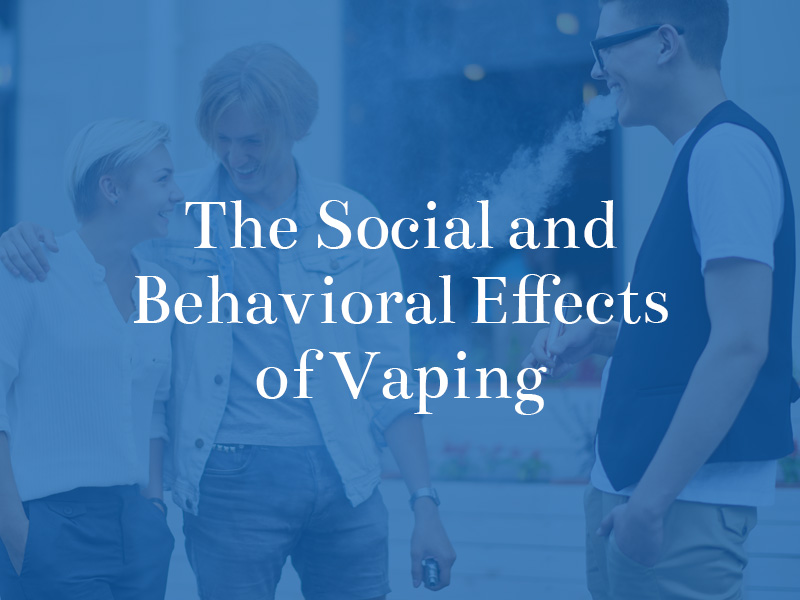A Voice for the Voiceless
The Dunken Law Firm is committed to helping each client find their voice and recover what has been lost.
START MY FREE CONSULTATIONJanuary 10, 2020 | Mass Torts
A vaping epidemic occurring among adolescents is leaving parents distraught over the potential and misunderstood repercussions. Many teens are under the incorrect assumption that an e-cigarette or vape pen is not a health risk since it is not a traditional cigarette. Though studies on the long-term effects of vaping are ongoing, there are well-known dangers associated with nicotine use.

The most important issue is how the vulnerable adolescent brain is affected by nicotine. Since parts of the brain do not finish developing until around age 25, the younger an individual begins to vape, the more negative implications there are. Vaping can often lead to problems with decision making, memory, impulse regulation, emotional control, and addiction. In addition, symptoms and behaviors of depression, anxiety, and hyperactivity can be exacerbated. This is due to the brain’s chemistry being transformed, resulting in behavioral changes, such as:
Your child may be more irritable or easily frustrated, especially if they go long periods in between vaping.
Nicotine addiction may cause an adolescent to exhibit other risky behaviors or make otherwise unsound decisions.
Sleep patterns can be affected by as nicotine, and create a sense of restlessness. A child who stays up later, sleeps in past their usual wake up time, or perhaps, conversely, develops difficulty sleeping or getting enough rest could be having trouble due to their nicotine habit.
A child’s academic or athletic performance may begin to decline. Additionally, students who get caught vaping at school may be suspended or kicked off of a sports team.
It is estimated that more than one in four high school students vape, according to the Centers for Disease Control and Prevention (CDC). That translates to 27.5 percent of students in 2019, an alarming increase from 11.7 percent in 2017.
The following are signs that your child may be vaping:
The surge in adolescent vaping, according to data from the 2016 National Youth Tobacco Survey, is:
The look and flavors of e-cigarettes definitely appeal towards youth, who often believe vape juice or e-liquid consists only of water and flavoring. Some e-cigarette labels do not disclose that they contain nicotine, and some are marketed as not containing any nicotine, although they have been found to. It is vital to make children and teens aware of the potential dangers of vaping. Learn more about vaping lawsuit.
A recent string of vaping illnesses across the country have been strongly linked to vitamin E acetate, an additive often found in illicit vape cartridges. The CDC has reported 2,602 cases and as many as 57 deaths. If you believe your child has been injured from vaping, contact the mass tort lawyer from Dunken Law Firm, as you may be eligible for compensation from the product’s manufacturer. Have your case evaluated for free today, by calling (713) 554-6780 or reaching us online.